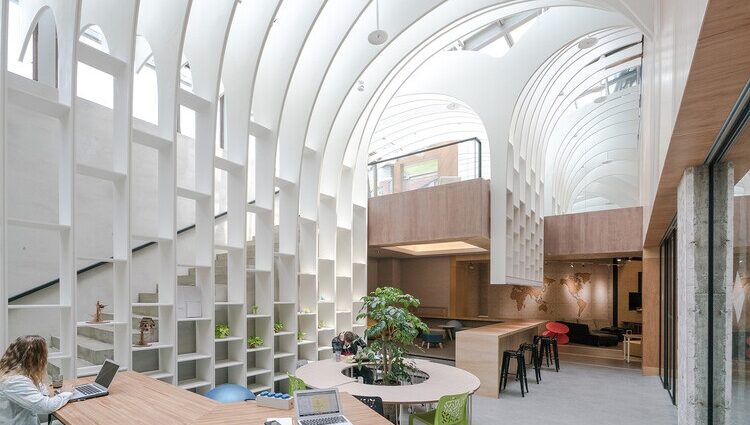In recent years, the importance of well-being in our daily environments has grown significantly. With most of us spending ample time indoors, our spaces must be thoughtfully designed to foster mental and physical health. Here are crucial elements for cultivating a wellness-focused interior:
1. Natural light
Benefits of sunlight: natural light is vital for mental and physical health. Exposure to sunlight helps regulate the body’s circadian rhythms, improves mood, and increases productivity by boosting serotonin production. According to studies, people with ample access to daylight often have better sleep patterns and enhanced cognitive performance.
Design tips:
Maximizing windows: install larger windows to maximize light entry, or consider floor-to-ceiling windows where possible. In spaces that lack ample windows, strategically place mirrors across from light sources to reflect natural light throughout the room.
Sheer curtains: replace heavy drapes with sheer curtains or blinds to allow sunlight to filter in while maintaining privacy. Translucent window treatments can soften and diffuse natural light, creating a more even and calming ambiance.
2. Ergonomic furniture
Importance of ergonomics: ergonomic furniture is essential for reducing strain on the body, particularly during prolonged periods of sitting. Poor posture can lead to musculoskeletal disorders and chronic discomfort, making it important to incorporate ergonomic design into home offices and living spaces.
Design tips:
Adjustable seating: choose chairs that offer lumbar support and can be adjusted in height and tilt. Ergonomic chairs conform to the natural shape of the spine, reducing back pain and promoting healthy posture.
Standing desks: incorporate sit-stand desks that can be adjusted to standing height, allowing you to alternate between sitting and standing throughout the day. This can help prevent sedentary lifestyle health risks.
Desk layout: keep the computer monitor at eye level to prevent neck strain, and arrange items you frequently use within arm’s reach.
3. Calming color schemes
Psychology of colors: the colors in a room can evoke specific emotions and influence behaviors. Calming hues like blues and greens have been shown to reduce stress and anxiety, while neutral tones provide a tranquil backdrop.
Design tips:
Monochromatic palettes: opt for a monochromatic palette that incorporates various shades of a single color to create a soothing, harmonious look. Soft blue or green walls paired with different tones of the same color in decor and textiles can provide a serene environment.
Accent colors: incorporate gentle accent colors through artwork, cushions, or area rugs to introduce subtle energy without overwhelming the space.
4. Biophilic design
Connection to nature: biophilic design is rooted in incorporating natural elements into indoor spaces. Studies have found that proximity to nature, even indirectly through plants or nature-inspired materials, significantly reduces stress and enhances creativity.
Design tips:
Plants: introduce a diverse selection of indoor plants, such as ferns, succulents, or pothos, to add greenery and purify the air. A small indoor garden or a collection of potted plants by the window can rejuvenate your space.
Natural materials: use furniture made of wood, stone, or bamboo to reinforce the connection to nature. Opt for wool or cotton textiles to soften the space with organic textures.
5. Organized spaces
Clutter and stress: cluttered environments often lead to increased anxiety and diminished focus. Organized, clutter-free spaces help promote productivity and relaxation.
Design tips:
Smart storage: invest in multifunctional furniture like ottomans or coffee tables with hidden storage to keep frequently used items organized. Modular shelving units or built-in cabinets can efficiently maximize vertical space.
Decluttering routine: adopt a decluttering routine to regularly dispose of unused items and maintain a neat environment.
6. Air quality and ventilation
Healthy air: indoor air quality has a direct impact on our health. Poor ventilation can lead to respiratory problems and fatigue, making it crucial to ensure a constant flow of fresh air.
Design tips:
Natural ventilation: keep windows open whenever possible to improve airflow and reduce indoor pollutants. Ceiling fans can help circulate air and regulate indoor temperatures.
Air purifiers: use air purifiers to filter out allergens and contaminants. Some plants, like snake plants and spider plants, are also known for their air-purifying properties.
Conclusion
Designing spaces for wellness involves more than aesthetics—it’s about intentionally crafting environments that nurture both mental and physical health. By incorporating natural light, ergonomic furniture, calming colors, biophilic design, organized spaces, and clean air, you can create a sanctuary that enhances well-being, relaxation, and productivity.

